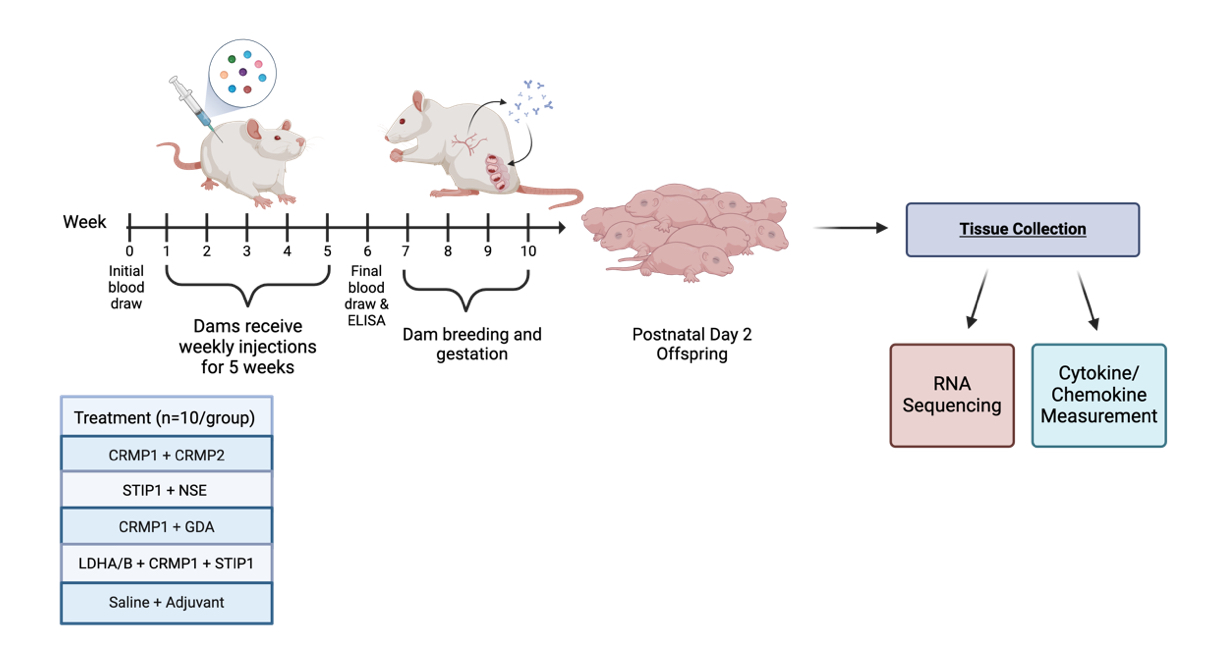Developmental and Behavioral Pediatrics 5: Autism 2/Other
Session: Developmental and Behavioral Pediatrics 5: Autism 2/Other
807 - Gestational Autoantibody Exposure Impacts Early Brain Development in a Rat Model of MAR Autism
Saturday, April 26, 2025
2:30pm - 4:45pm HST
Publication Number: 807.5549
janna McLellan, University of California, Davis, School of Medicine, Davis, CA, United States; Alex S. Nord, University of California, Davis, School of Medicine, Davis, CA, United States; Judy A. Van de Water, University of California Davis, Davis, CA, United States

Judy A. Van de Water, PhD (she/her/hers)
Professor
University of California Davis
Davis, California, United States
Presenting Author(s)
Background: Maternal autoantibody related autism (MARA), is a subtype of autism in which mothers produce specific patterns of autoantibodies during pregnancy that result in a high likelihood of an autism diagnosis in their offspring. Multiple patterns of MARA autoantibodies (MARA-ABS) have been identified, and differences in the severity of the autism phenotype associated with each autoantibody pattern have been described.
Objective: In this study we utilized preclinical rat models to further elucidate the differential effects of MARA-AB exposure based on the known clinical patterns, including the originally reported pattern of lactate dehydrogenase A and B (LDHA/B) + collapsin response mediator protein 1 (CRMP1) + stress-induced phosphoprotein 1 (STIP1), as well as the more recently described patterns of CRMP1+CRMP2, CRMP1 + guanine deaminase (GDA), and STIP1+ neuron-specific enolase (NSE).
Design/Methods: We generated a novel rat model of MARA in which we immunized dams with the top three clinically relevant patterns of autoantigens, CRMP1+CRMP2, CRMP1+GDA, and STIP1+NSE, in addition to the original LDHA/B+STIP1+CRMP1 pattern. Using postnatal day (PND) 2 offspring, we aimed to identify changes in neurodevelopment in exposed offspring through analysis of brain and peripheral cytokine/chemokine/growth factor levels as well as brain transcriptomic profiles to determine how MARA-AB exposure might influence early neurodevelopmental trajectories.
Results: We found that, at postnatal day 2, the levels of brain and serum cytokines/chemokines/growth factors were altered based on the pattern of MARAexposure. Further, we observed changes in the transcriptomic profiles of targeted areas of hippocampal formation and adjacent cortical and subcortical structures that suggest cellular proliferation and differentiation changes due to MARA exposure.
Conclusion(s): These combined observations demonstrate that gestational exposure to MARA-ABS alters early gene expression and immune signaling molecules, both of which may contribute to the altered neurodevelopment and behaviors associated with MARA.
Timeline of autoantibody generation in naïve female rat dams and subsequent allocation of offspring.
 Animals were created to mimic the clinical autoantibody profile using the clinical epitopes. The offspring were then tested for immune markers and downstream changes in gene expression in the post natal day 2 brain.
Animals were created to mimic the clinical autoantibody profile using the clinical epitopes. The offspring were then tested for immune markers and downstream changes in gene expression in the post natal day 2 brain. 
